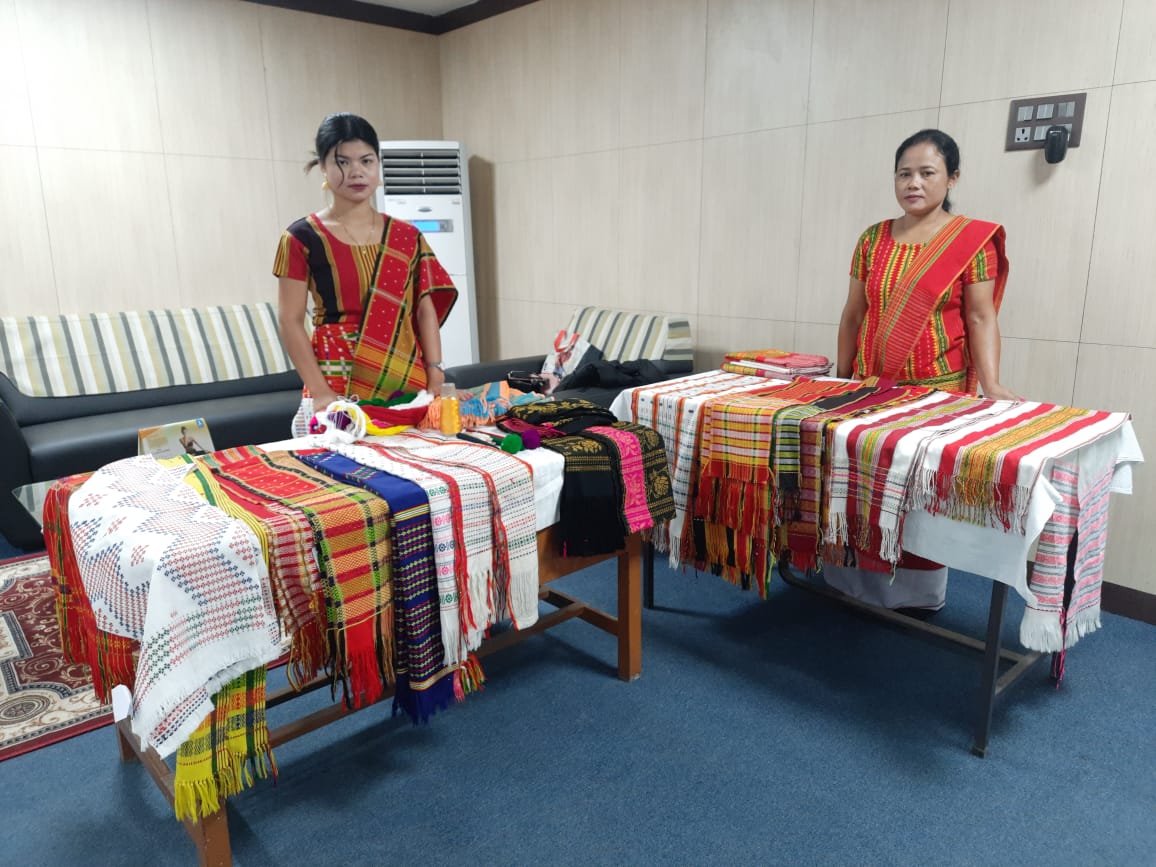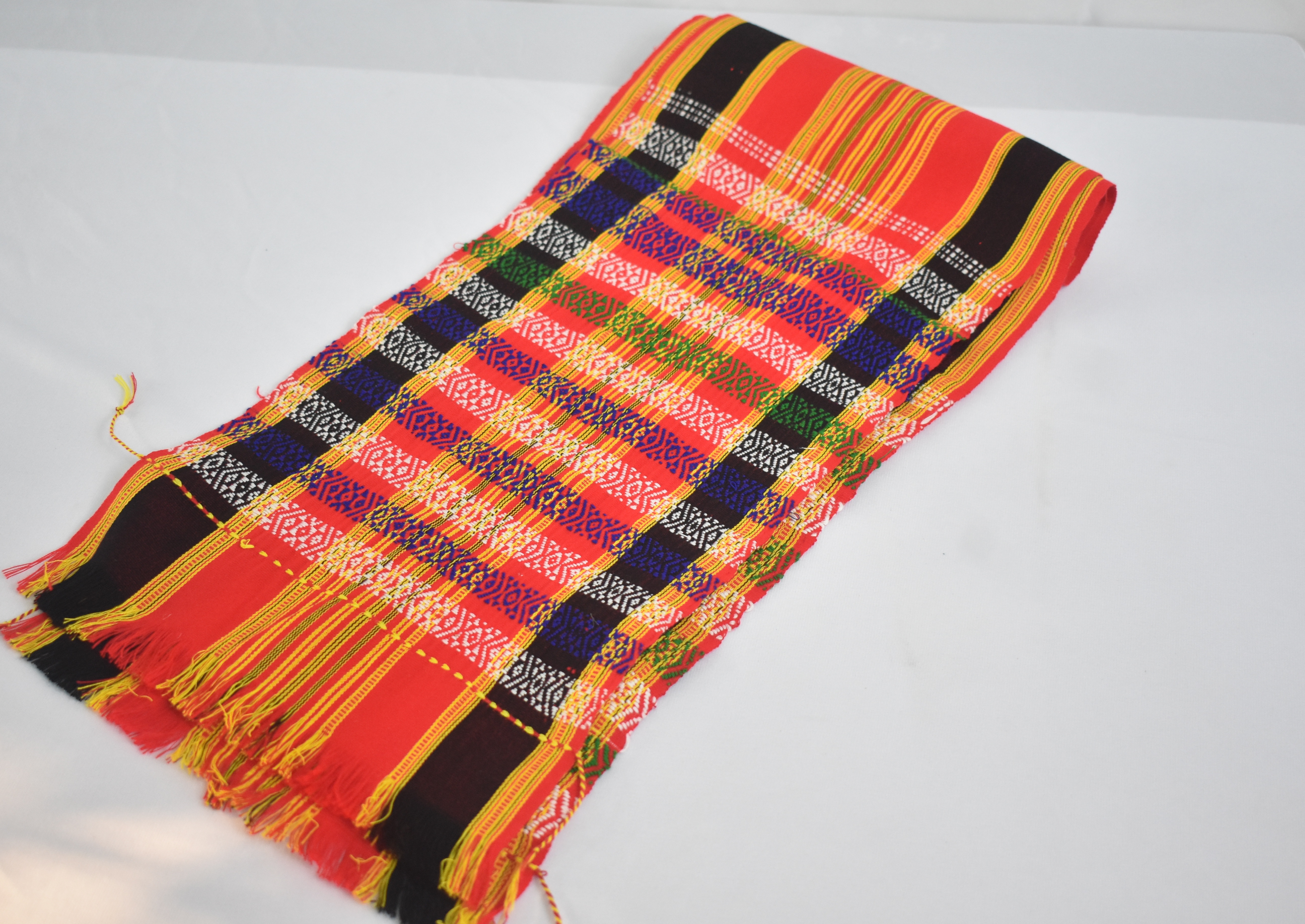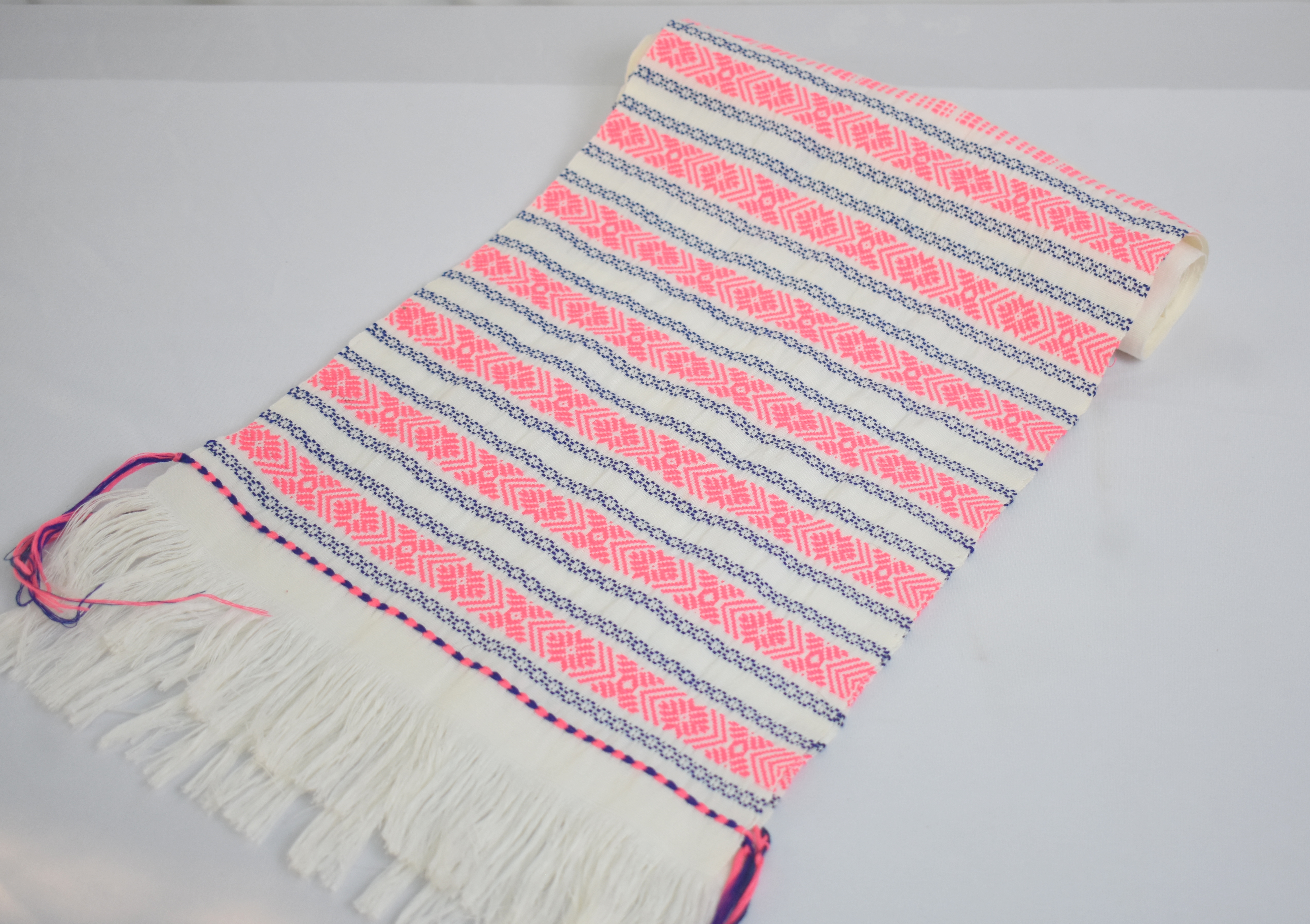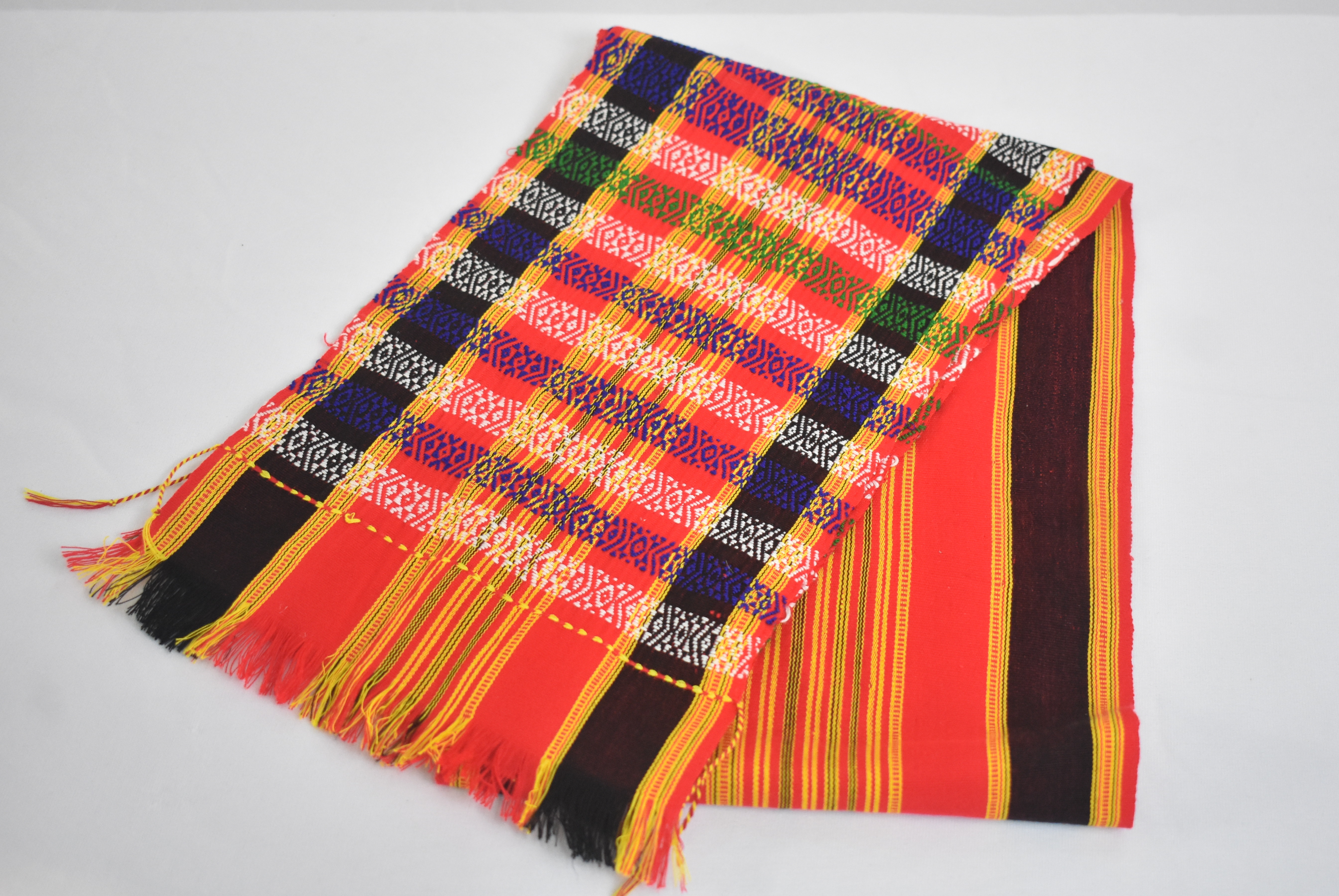



A testament to their dedication, and craftsmanship. We are happy that our vibrant, women-led SHG Federation, namely the Killa Mahila Cluster Level Federation (CLF) of Gomati District, has finally received the registration of RISA under Geographical Indication (GI). For the past 2 years, TRLM has provided all kinds of assistance to the CLF with mobilization, concept seeding on GI, report writing, and setting up the technical agency, including the GI hearing. In the coming days, all the RISA Producers in Tripura can avail the benefits of this GI tagging. However, NABARD has provided funding to the CLF for all procedure fees.
Information on Tripura RISA Textile
1. Brief Description of the product:
Risa is a customary handwoven cloth used by Tripura’s indigenous tribal communities. The complete Tripuri attire is claimed to have originated even before the Manikya kings’ rule. In the ancient days, they used to judge a woman’s intelligence in these communities by her woven Rignai and Risa designs.
The Risa is used as a headgear, stole, female upper cloth, or presented to honor a distinguished recipient. Apart from its beautiful designs, the Risa plays a host of crucial social utilities. Adolescent Tripuri girls are first given. Risa to wear when she reaches 12-14 years in an event called Risa Sormani. It is also used in religious festivals like the Garia Puja, a customary festival of the tribal communities, or as a head turban by male folks during weddings and festivals. Risa is one of the three parts of a customary Tripuri female attire, the other two being the Rignai and Rikutu. The Rignai is primarily used to cover lower part of the body and literally translates into ‘to wear’. The Rituku covers the upper half of the body, wrapping it all around. However, it is also used like a ‘chunri’ or a ‘pallu’ of the Indian saree. It is also used to cover the head of newly married Tripuri women.
People in Tripura look to weaving an inseparable part of life. The industry has passed on from generation to generation. The tribal women of Tripura are religiously devoted to weaving. The beginning of ritual has always been with the offering of flowers and beautiful piece of Riha and Risa given by the great grandmother and followed by each and every tribal family as their tradition. In fact it was a pre-requisite for every tribal girl to know weaving. Otherwise she should not be considered as a bride.
Significance of Risa:
• Apart from its beautiful designs, the Risa plays a host of crucial social utilities.
• Adolescent Tripuri girls are first given risa to wear when she reaches 12-14 years in an event called Risa Sormani.
• The event involves prayers to a Lampra god, where her elder women pray for her wellbeing throughout her life.
• Risa is primarily used as a breast cloth and is wove in different colourful designs.
• However, it is also used in religious festivals like the Garia Puja, a customary festival of the tribal communities, or as a head turban by male folks during weddings and festivals, as a cummerbund over dhoti, head scarf by young girls and boys, muffler during winters.
• The cloth is even used as a makeshift baby carrier on the mother’s back.
• Risa has been in circulation as an honorary stole among indigenous community leaders and Tripura people with dignity.
• It is common in almost all 19 indigenous tribal communities of Tripura. However, each community has its own designs.
• The garment is made in handloom or loin looms at homes. Usually, only one or two pieces are prepared in a month. Most of this art is handed down through generations. However, many of the designs were lost with the passage of time, and only a few remain.
• Adolescent Tripuri girls are first given a risa at age 12 to 14, to wear in an event called Risa Sormani.
It is also used for other purposes such as;
In religious festivals such as Garia Puja by tribal communities,
In weddings and festivals as a turban by men,
headscarf by young girls and boys and
During winters as a muffler.
2. Production Process:
In Tripura, the Lion Loom is used for weaving. These age-old looms are simple to construct and easy of operate. They are cheap too. They have neither permanent fixtures nor heavy frames and so are easily portable. Apart from these, the greatest advantage that lies with these looms is the unlimited scope that they offer for designing.
It is also called the Back strap loom. A common Lion loom consists of:
Front bar- the front bar is a circular wooden bar put in between two loops fixed with the wall of the house.
Breast Bar-the warp is fixed between the front and the breast bar. The breast bar is also a circular wooden bar.
Sword –the sword is a flat wood piece and rests in front warp, one end of this sword is blunt and the other end is pointed.
Healt bar- it is made of bamboo and circular in shape
Circular bamboo bar-this is another circular bamboo bar but little longer than the former and is placed after the healt-bar.
Lease rod-after the circular bamboo bar is fixed, the lease rod, which is a circular wooden rod.
Back strap-this is made either of leather or cloth. There are two loops at the ends of the back strap, which are attached to the notches of the front warp bar.Nearly all types of weaves can be woven in the Lion Loom. The possibilities of weaving pattern in a Lion Loom are unlimited. The weaver sits with a loom fixing the back strap, keeps her legs against the footrest, which is adjustable for keeping the loom in tension.
The weaving in the lion loom is governed by the shedding motion, the picking motion and the beating motion. The healt bar is lifted up with the left hand and the circular bamboo bar is pressed down by right hand simultaneously. The sword is then placed in the shed and kept vertical and the weft is passed from the right side by the right hand by means of the shuttle (a bamboo piece ship containing yarn) and picked up by left hand. The weft is then beaten up by the sword. The sword is then taken out and the center shed are produced through which the shuttle is passed by the left hand and is picked up by the right hand. The sword is then again placed to beat the weft. The process is repeated. When the weaving just begins, the two-bamboo splits work as the first weft. This is the technique of plain weave of one up and one down and the process is continued until any pattern is woven.
3. Challenges faced before GI tag:
One of the primary challenges is the lack of legal protection for the unique qualities and characteristics associated with RISA. Without GI protection, there's a risk of imitation or misuse of the product's name or reputation by producers outside the geographical area.
Before obtaining GI status, RISA producers may struggle with protecting their products from being copied or misrepresented by competitors.
Without a GI tag, it can be challenging for the RISA producers to differentiate their products in the market. Lack of recognition for the unique qualities associated with the product may result in limited market access and lower prices.
RISA producers under Killa Mahila Cluster Level Federation do not know how to file and get GI protection. They even have less knowledge in case someone else is misusing and misleading their GI. They do not understand what remedy is available to them for curbing such misuse.
Building awareness about the unique qualities and cultural significance of the RISA among consumers, both locally and internationally, is essential. However, without GI status, it may be challenging to effectively market the product and convey its value proposition to consumers.
4. Impact Post GI tagged:
The impact of obtaining a Geographical Indication (GI) tag for RISA is significant and far-reaching, benefiting both the producers and the region associated with the product.
GI tagging of RISA has led to increased demand for the product, often resulting in higher prices and greater market access.
This helps safeguard the cultural heritage of RISA and promotes intergenerational transmission of valuable skills.
This has led to increased consumer trust and loyalty towards RISA, as well as differentiation from competing products in the market.
GI registration of RISA provides legal protection against unauthorized use, imitation, or misappropriation of the product's name, reputation, and characteristics. This helps to protect the interests of weavers of Tripura and ensures market exclusivity for authentic products.
5. Link for Promotion:
Presently GI tagged RISA is available in https://villmarttripura.in/ which is promoted by Tripura Rural Livelihood Mission. Besides this, TRLM has also started on boarding RISA in different online platforms such as (Amazon and Flipkart). However, any interested buyer can directly contact the Killa Mahila Cluster Level Federation (CLF) which is situated at Killa RD Block under Gomati District, Tripura.




